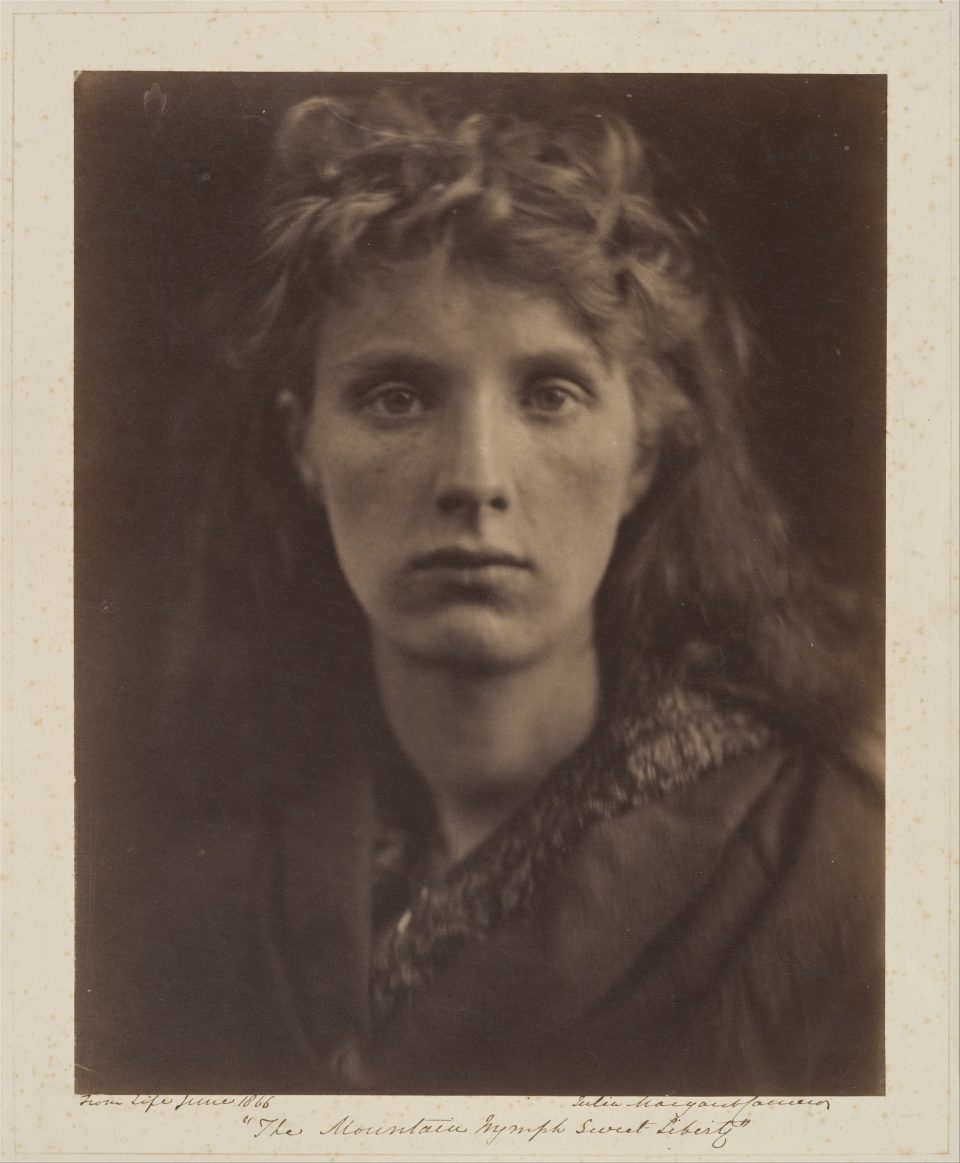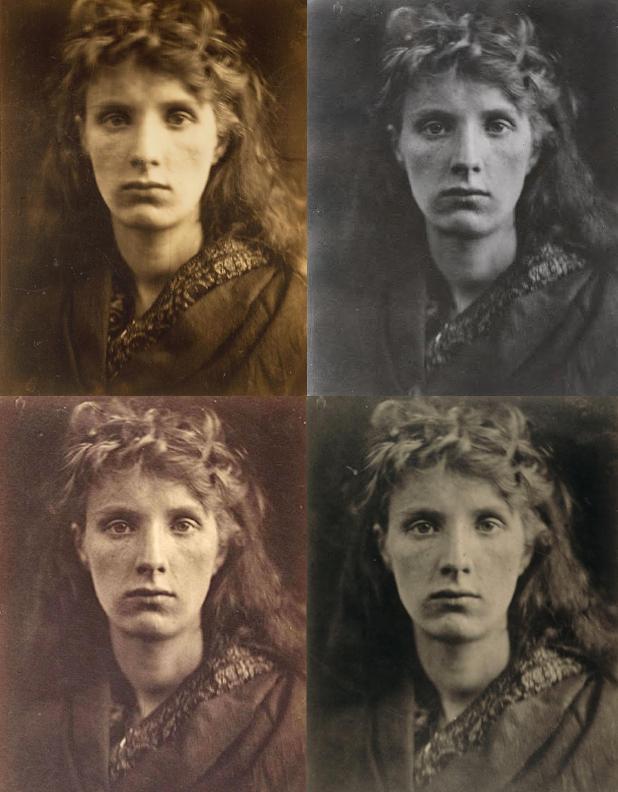The story behind one of Cameron’s most famous photographs
In this episode, I discuss the story behind a famous 1866 photograph by pioneering British photographer Julia Margaret Cameron. We know what camera and lens Cameron used to shoot the glass plate negative, but the captivating model Ms. Keene is an enigma — almost nothing is known about her.


Credits and useful links:
The specific print I discuss is this one in the collection of the The Metropolitan Museum of Art:
https://www.metmuseum.org/art/collection/search/268697
Victoria and Albert
https://www.vam.ac.uk/collections/julia-margaret-cameron
New York Times article
https://www.nytimes.com/2013/08/23/arts/design/julia-margaret-cameron-at-the-metropolitan-museum-of-art.html?_r=0
Another photograph of Ms. Keene on Artsy
https://www.artsy.net/artwork/julia-margaret-cameron-mrs-keene
A range of Cameron’s work at The Met
https://www.metmuseum.org/toah/hd/camr/hd_camr.htm
Podcast Episode 20 Transcript
Let me just say right away… I kinda have a crush on this girl. Look at her with a bright, direct gaze – it feels like she’s staring right back at us. It’s a little disarming. Throw in a British accent and wow.
I’d like to introduce you to Ms. Keene, posing as “The Mountain Nymph, Sweet Liberty” for the lens of Julia Margaret Cameron in June of 1866. I’ll describe this photograph in detail, but if you want to see it — and you definitely should — follow the link in the description that takes you to a beautiful copy on the Met Museum’s website or go to my blog where I’ll have it posted.
You can tell by the print’s distinctive yellow-brown coloration that this an albumen print, in which the light sensitive chemistry is made into an emulsion and coated onto paper using egg whites as a medium. I’m planning a future episode where I go into detail about albumen prints. This print is made from a 12 x 15 inch glass negative and is pretty large at 14 3/16 inches x 11 1/4 inches.
There are several other copies of this photograph in various museums and they all look a little different.
The title comes from a Milton poem called L’Allegro, which celebrates the pleasures of life.
“Come, and trip it as you go
On the light fantastic toe;
And in thy right hand lead with thee
The mountain nymph, sweet Liberty.”
About Ms. Keene, very little is known.
The photographer Julia Margaret Cameron was a British photographic pioneer who was given her first camera as a gift at the age of 48, and learned quickly that she had a natural talent.
Although Cameron had no knowledge of the process and confessed that she ruined her first wet plate image by accidently rubbing her hand over its wet, filmy surface, she caught on quickly and came to view herself as a pro. Within her first two years, she sold over 80 prints to the Victoria and Albert Museum — quite an accomplishment.
Cameron would enlist friends, neighbors, relatives and even servants as models, dressing them in Classical-styled costumes as though she were producing a play. This image of Ms. Keene is a great example of that.
As a connected member of society, Cameron also photographed notables like Darwin and Tennyson, who said Cameron’s models were more like victims. Apparently, holding lengthy poses in her untidy studio was not the most pleasant experience.
Even though the Victoria and Albert loved them, her photographs were not well received by everyone. Other photographers criticized her technique, calling her soft-focus, blurry images lazy and improper. And if you look at the Met’s example, you can see the image is not sharp.
I’m guessing there may have been some sexism in the male photographers’ reactions too — remember this was the mid-1800s — but even today, photographers tend to be people with strong opinions about technique and what makes a good photograph.
Cameron mailed this very copy we are looking at to her friend Sir John Herschel, who wrote back that, while she looked timid or even a little distraught, that the photograph — “is really a most astonishing piece of high relief–She is absolutely alive and thrusting out her head from the paper into the air. This is your own special style.” That’s a direct quote.
And while I think Ms. Keene looks more sleepy or bored, than timid, Herschel was right in remarking that the photograph looks sculptural — Her face seems to lift off the page with a dimensional quality. I think that’s partly because of the lighting — her face is lit on one side in soft window light, but darker on the other side, and her long, unbrushed hair recedes into the darkness of the out of focus background. It’s also partly because of the Rapid Rectilinear lens, which does add a sense of depth by casting her quickly out of focus from front to back.
Even though it’s 149 years old, this photo feels very fresh to me. I can almost imagine it on the pages of a modern fashion magazine. Although sleepy, Ms. Keene’s eyes are bright and youthful — she’s probably 20 years old or younger. Her bangs are a tussle of curls above her forehead. She’s not wearing make-up — hers is a natural beauty. You can detect the slightest hint of freckles on her high cheekbones and her mouth is straight — unsmiling.
Around her shoulders is a dark cloak with some type of embroidered collar — it almost looks like an inverted drapery or rug. But the dark fabric and the dark background frame her radiant face.
I encourage you to seek out and learn more about Julia Margaret Cameron’s pioneering photography work. Thanks for listening. Check the description or go to my blog at i catch shadows dot com to see my sources and to see the photo discussed here.
That’s all I’ve got for this episode — thanks for listening — I’ll talk to you again real soon.
